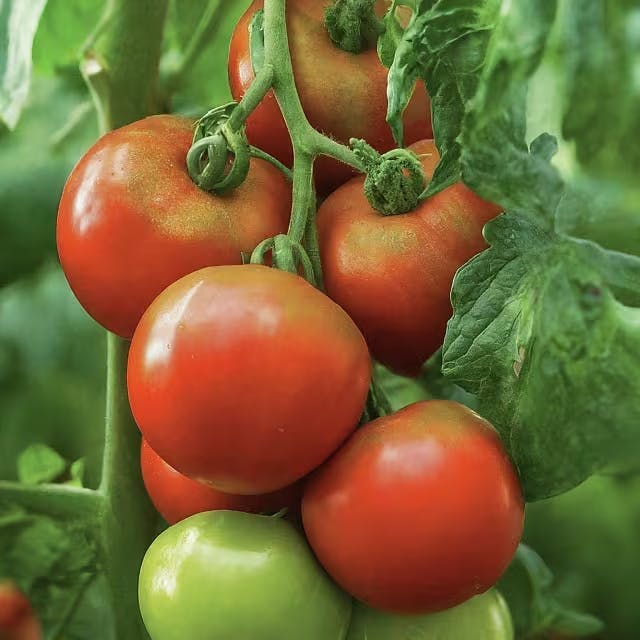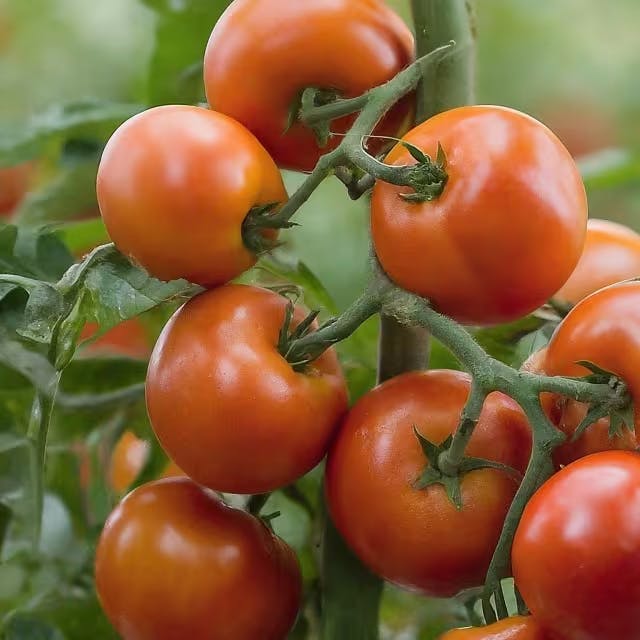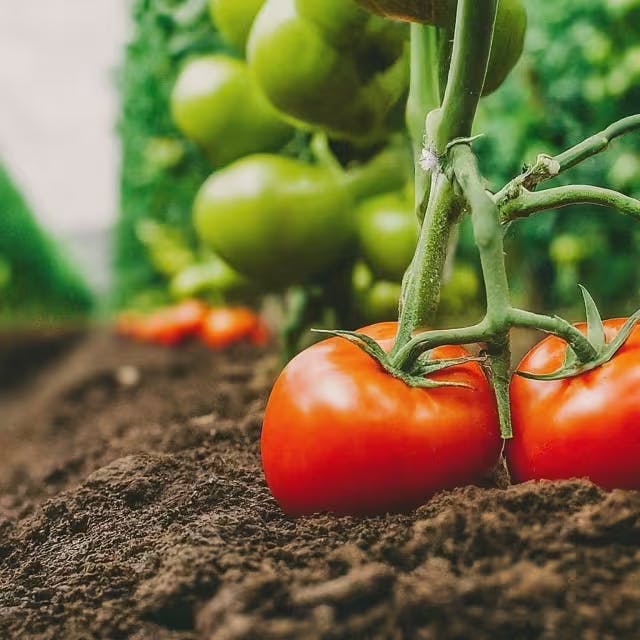Trough Transplanting Method for Tomatoes
Go4Turf
February 22, 2024

Exploring innovative gardening techniques can significantly enhance the yield and health of your tomato plants, and the trough transplanting method for tomatoes offers a promising approach. Tailored for those aiming to maximize their tomato cultivation success, this method combines strategic planting practices with effective soil and water management to ensure your tomatoes thrive. With an emphasis on choosing the right varieties, providing adequate support, and implementing disease control measures, this introduction to the trough transplanting method lays the groundwork for a bountiful and healthy tomato harvest.
Key Takeaways
The trough transplanting method combines strategic planting, soil, and water management techniques to enhance tomato yield and health.
Choosing the right tomato varieties is crucial for success with this method.
Adequate support for tomato plants is essential, involving structures or staking to promote healthy growth and ease of access.
Implementing disease control measures is a vital aspect of the trough transplanting method to ensure a healthy tomato crop.
The method offers several benefits, including improved plant health and yield, when executed correctly.
Common mistakes in trough transplanting, such as improper soil preparation and water management, should be avoided for optimal results.

Understanding the Trough Transplanting Method for Tomatoes
The Trough Transplanting Method for planting tomatoes is a game-changer for both novice and experienced gardeners. This approach involves creating shallow yet wide troughs in the soil to transplant tomato seedlings. It's a technique that encourages robust root growth and ensures the plants have adequate room to thrive. Given tomatoes' love for sunny, well-drained spots, enhanced with rich organic matter, this method is a perfect match. Using this tactic can lead to healthier plants by enabling deeper root systems, leading to improved water and nutrient uptake.
Here are the key steps for successful trough transplanting:
Prepare the Site: Choose a sunny location with well-draining soil. Amend the soil with compost or aged manure to increase fertility.
Dig the Trough: Instead of individual holes, dig a trough about 4 inches deep and as long as your tomato row. Ensure it's wide enough to accommodate the root spread of your transplants.
Plant Your Tomatoes: Space your tomato plants along the trough. Leaning them slightly toward the sun can encourage stronger stems. Backfill the trough gently, covering the roots and lower stem with soil.
Companion planting, such as placing marigolds beside tomatoes, can protect against pests like glasshouse whiteflies, as research suggests. This natural pest control method not only reduces the need for chemicals but also promotes a more diverse ecosystem in your garden.
To ensure your tomatoes flourish, consider factors like the plant variety. In areas with shorter growing seasons, determinate or semi-determinate tomatoes that set fruit in a concentrated period are ideal. Proper care post-transplant, including deep watering, balanced feeding, and using supports, ensures your plants remain healthy and productive. For an abundant harvest, pick tomatoes when fully colored but still firm to the touch.
In essence, the Trough Transplanting Method, paired with smart gardening practices, can elevate your tomato growing experience. Not only does it streamline the planting process, but it also sets the stage for a bountiful tomato season. For further insights on gardening and plant care, explore articles like DIY Seed Starting and Potting Mix for Gardeners for tips on preparing your plants for success right from the start.
By embracing these techniques, you're on your way to enjoying luscious, home-grown tomatoes that are the envy of your neighborhood. Remember, a little preparation and care can lead to substantial rewards in the garden. Happy planting!
Steps for Successful Trough Transplantation of Tomatoes
Planting tomato seedlings with the trough transplanting method offers several benefits, including stronger root development and improved adjustment to outdoor conditions. Let's explore some steps to ensure successful implementation of this technique.
First, select a sunny, well-draining location for your trough. Tomatoes thrive in full sun, so a spot that receives at least 6-8 hours of direct sunlight is ideal. Prepare the soil by incorporating organic matter to improve texture and fertility. A well-balanced, slow-release fertilizer can also be added at this stage to provide essential nutrients.
Next, carefully remove the tomato seedlings from their current containers, minimizing root disturbance. Create a trench in the soil approximately 4 inches deep. Lay the seedlings on their side in the trench, gently bending the stem upward while ensuring the roots lay flat at the bottom. This method encourages a deeper root system as the plant will develop additional roots along the buried stem.
Fill the trench with soil, covering the roots and stem up to the first set of true leaves. Water the seedlings thoroughly after planting to settle the soil and provide necessary moisture for root development. A layer of mulch around the plants can help retain soil moisture and regulate temperature.
To protect young plants from extreme weather and pests, consider using a portable greenhouse or row covers until they are more established. Dan Pfeifer shared his success with using a portable greenhouse to create ideal conditions for his heirloom tomatoes, resulting in strong, healthy plants (read about his experience).
As the tomatoes grow, regular watering, monitoring for pests and diseases, and providing support through staking or caging are important to ensure a bountiful harvest. For more tips on caring for your tomato plants, check out this guide on transforming your black thumb into a green thumb.
By following these steps, gardeners can maximize the advantages of the trough transplanting method for tomatoes, leading to vigorous plants and an abundant crop.

Benefits of Trough Transplanting in Tomato Cultivation
Implementing the trough transplanting method for tomatoes boasts several advantages that can significantly enhance your gardening or farming success. This technique not only streamlines the planting process but also nurtures healthier plants capable of yielding bountiful harvests. Here’s how:
Uniform Growth: Seedlings transplanted into troughs experience consistent soil conditions and moisture levels, contributing to uniform growth rates among plants.
Optimized Water Usage: Trough systems allow for targeted watering, reducing waste and ensuring that water reaches the roots where it's needed most.
Enhanced Root Development: The design of troughs fosters deeper root growth, improving plant stability and nutrient uptake.
Pest and Disease Management: Elevating plants in troughs can minimize the risk of soil-borne pests and diseases, promoting a healthier crop.
Moreover, adopting this method can make the management of your tomato plants more efficient. Regular maintenance tasks such as weeding become less labor-intensive, allowing you to focus on other aspects of gardening or farming. Additionally, trough transplanting can extend the planting season by offering more control over the soil environment, a boon for those looking to maximize their tomato output.
For those keen on sustainable practices, trough transplanting aligns well with the use of recycled materials for constructing troughs. It’s a smart choice for eco-conscious gardeners aiming to reduce their environmental footprint while enjoying the fruits of their labor. In essence, this method offers a blend of benefits that can elevate your tomato cultivation to new heights.
Common Mistakes to Avoid in Trough Transplanting
When exploring the trough transplanting method for tomatoes, a few pitfalls can hinder the success of your garden. Heeding advice from seasoned gardeners, like those shared from lessons in growing garlic and shallots, can illuminate common areas where mistakes are made.
Planting at the incorrect time: Just as with garlic, timing is crucial. For tomatoes, ensure you're transplanting after the last frost to avoid cold damage.
Improper soil preparation: Similar to the need for balanced compost and organic fertilizer in garlic planting, your tomatoes will thrive in well-amended soil. Skimping on this step can lead to nutrient-deficient plants.
Overcrowding plants: Giving your tomato plants enough space is key to their growth. Overcrowded plants compete for light, water, and nutrients, which can lead to poor fruit production.
Incorrect planting depth: Tomatoes benefit from being planted deeply, with a portion of the stem buried to encourage strong root development. However, planting too deep or too shallow can stress the plants.
Neglecting mulch: Mulch is not just for keeping weeds at bay; it also helps maintain soil moisture levels. Not using mulch can lead to irregular watering needs and stress on your plants.
By sidestepping these common missteps, you'll bolster the chances of enjoying a bountiful tomato harvest. Just as with garlic and shallots, attention to detail and proper preparation can significantly impact your gardening success. Adopting the Trough Transplanting Method for tomatoes offers gardeners a powerful technique to maximize yield, health, and vigor of their tomato plants through improved root development and efficient space management. When executed correctly, incorporating steps from site selection to post-transplant care while avoiding common pitfalls, this method can elevate the quality and quantity of your tomato harvest. It stands as a testament to the innovative approaches that blend traditional wisdom with modern gardening practices, ensuring a bountiful and healthy tomato crop for both novice and experienced gardeners alike.
Frequently Asked Questions
What are the benefits of using the trough transplanting method for tomatoes?
The trough transplanting method for tomatoes offers enhanced root development, improved water and nutrient uptake, and healthier plants with a deeper root system. This technique involves creating shallow, wide troughs, accommodating the tomato seedlings' root spread efficiently, and promoting robust growth. By adopting this method, gardeners can set the stage for a bountiful tomato season through a process optimized for tomato plants' specific growth needs and preferences.
How do you prepare the soil for trough transplanting of tomato seedlings?
To prepare the soil for trough transplanting of tomato seedlings, start by selecting a sunny, well-draining location. Amend the soil with organic matter such as compost or aged manure to enrich fertility. Then, dig a trough approximately 4 inches deep to accommodate the root spread of your transplants. This method promotes robust root growth and ensures ample space for plants to thrive, setting the stage for a healthy and productive tomato season.
What steps should be taken to ensure successful trough transplanting of tomatoes?
For successful trough transplanting of tomatoes, ensure a sunny, well-draining location and prepare the soil with organic matter. Dig a trough about 4 inches deep, place tomato seedlings on their side while gently bending the stem upward, then cover with soil up to the first set of true leaves. Water thoroughly and apply mulch to retain moisture. Remember, proper spacing, avoiding overcrowding, and selecting the right plant variety for your climate are crucial to thriving tomato plants.
How does companion planting benefit tomato growth in the trough transplanting method?
Companion planting in the trough transplanting method for tomatoes enhances pest control and promotes a biodiverse ecosystem. Marigolds, when planted alongside tomatoes, can deter pests such as glasshouse whiteflies without the need for chemical pesticides. This natural approach not only supports healthier plant growth by reducing pest-related stress but also contributes to creating a more sustainable and eco-friendly garden environment.
What are common mistakes to avoid when using the trough transplanting method for tomatoes?
Avoid these common mistakes when using the trough transplanting method for tomatoes: planting at the wrong time (ensure after the last frost), improper soil preparation (use well-amended soil), overcrowding plants (space adequately for less competition), incorrect planting depth (plant deeply but not too deep), and neglecting mulch (maintains soil moisture).